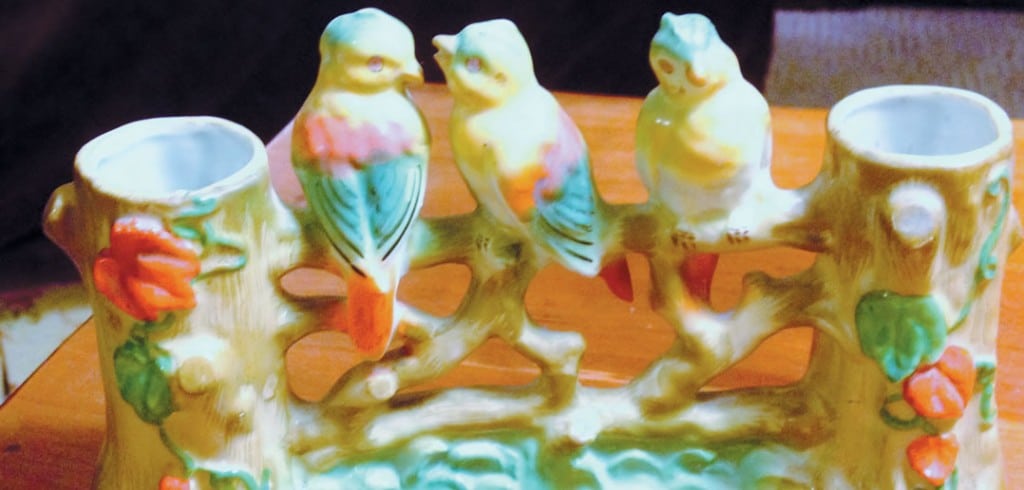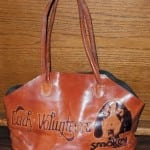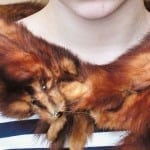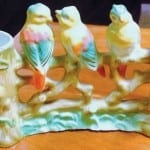I’m attaching a picture of a leather purse that has “Lady Volunteers” and “Smokey” tooled into the leather. Can you tell me anything about it?
I hope you find it interesting enough for The Tennessee Magazine. I purchased it at a Goodwill Store for less than $5.
Glenda, Milledgeville
Glenda,
Your tooled-leather purse must have been made in the mid to late 1970s. If the handbag was made and distributed by a licensed Lady Vols vendor, there must be a mark to denote permission. Unless a craftsman made only a few (fewer than 20) for his or her best friends, there should be an import or maker’s mark of some sort, too. Regardless of marks, you got a good deal. Other purses are offered and sell for $20 to $30.
My great-aunt, 1905-1985, wore this fur shawl, which fascinated me as a youngster when I sat behind her in the church pew. I would love to know any details you could share about it. My aunt liked to dress fashionably. My sisters, brother and cousins all have our share of “Aunt Ag” stories, as she was our very own eccentric Southern great-aunt.
Thank you for any information you could share in The Tennessee Magazine.
Carol, Lascassas
Dear Carol,
Even into the 1970s, I can remember sitting behind glassy-eyed foxes biting each other’s tails. Our very-cool aunts were instructed by Hollywood in the 1930s how to fashionably wear furs by clipping them first to a sleeve or belt, then draping them over the shoulder and around your neck. This was to be done while holding a cigarette, in gloves and not setting your hat’s netting afire. The makeup and glamour of Hollywood were somewhat dimmed by church lighting, but cocktail parties in the mid-1900s must have been a-fluff with furs.
Because so many ladies owned little fox stoles back in the day, there are quite a few on the market. Your Aunt Ag’s might sell for $10 to $50. White or silver pelts double the value. Stoles with five or more silver, white or especially fluffy foxes can tickle $200.
I am writing about my grandmother’s ceramic birds made in Japan. It now belongs to me. I refer to it as “it” because I really don’t know WHAT it is. I am hoping you can tell something about this item.
Naomi
Dear Naomi,
Your colorful row of three birds perched on a fence rail was made in the 1920s or 1930s by Maruyama Toki Yamashiro Ryuhei in the Japanese province of Aichi. “It” is a vase for flowers with short stems. I use a similar one to hold tiny grape hyacinths every spring. It would make a nice pencil holder, too.
Although birds are always popular, I think the biggest feature of this little vase is its cheery attitude. In an antique mall, I’d expect to see it priced between $12 and $25. In February, one lucky buyer acquired one for $7 on eBay.






